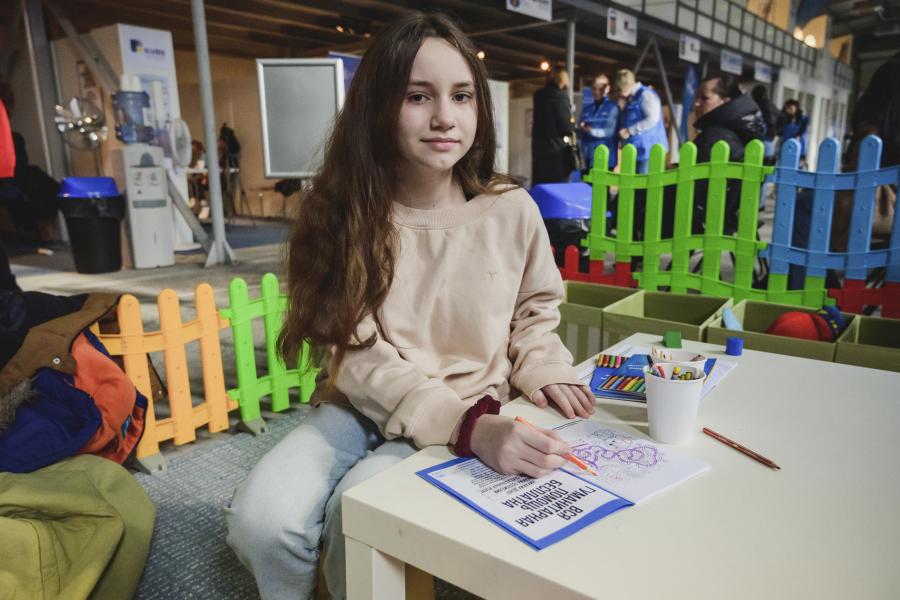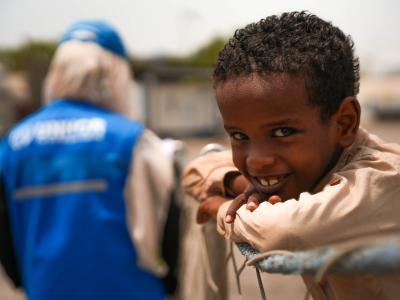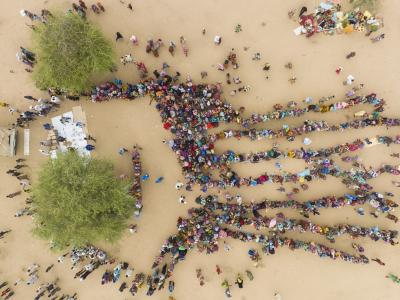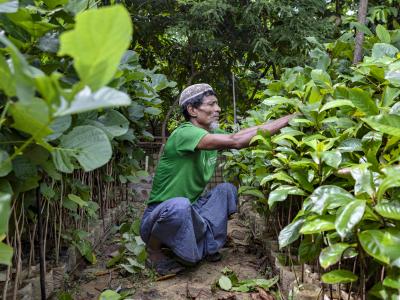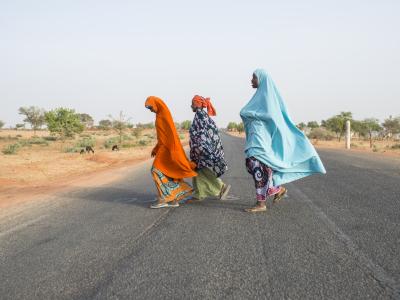Results in 2023
In 2023, UNHCR witnessed the devasting effects of conflicts and displacement on children and their families. Over 50 million children were forcibly displaced, mostly after fleeing from armed conflict. The risks most commonly reported by UNHCR operations were unaccompanied or separated children, followed by child labour, gender-based violence – including child marriage and sexual violence, physical violence or abuse against the child, and child neglect. Other risks included psychological distress, immigration detention, children with disabilities, recruitment by armed forces and groups, and child trafficking.
With the needs increasing at an alarming rate, the funding gap remained wide. In September 2023, UNHCR published an analysis of the funding of crucial inter-agency child protection services in refugee responses, showing they had received less than one quarter of the required funding, nine months through the year. Despite this shortfall, UNHCR, national authorities and partners maintained essential child protection services. Data from 126 UNHCR country operations showed that in 2023, 76% of countries had at least one child protection service available to forcibly displaced and stateless people, a slight decline from 78% in 2022, based on data from 125 countries. While services remained available, their quality suffered due to insufficient funding, exemplified by the rising caseworker-to-children-at-risk ratio.
UNHCR and its partners in 61 offices (including the multi-country offices that cover more than one country) provided child protection response services, including Best Interests Procedures (BIP) and alternative care arrangements, among others. Out of 24 countries reporting data in 2022 and 2023, 60% either improved or maintained their support levels for children at heightened risks with a BIP in 2023. In Türkiye, 60,000 children at risk were referred to multi-sectoral specialized services, and significant increases were observed in the number of children supported by a BIP (from 50% in 2022 to 69% in 2023). In Sudan, despite the eruption of a devastating conflict and related challenges of access, UNHCR strengthened child protection case management systems. BIP was provided for 9,823 children and they were referred to specialized services such as individual cash assistance, material support, legal assistance, medical care, psychosocial support and education.
Out of 25 UNHCR country operations reporting comparable data in 2022 and 2023, 18 reported that they had either maintained or increased the proportion of unaccompanied and separated children placed in alternative care arrangements, including family-based care. For instance, Egypt, South Sudan and Mauritania saw a substantial improvement in access to alternative care, reducing child protection risks by providing a safe environment. In Niger, about 80% of unaccompanied and separated children in the operation benefited from alternative care services. Foster families were identified to care for children in need, in collaboration with government and partner organizations.
UNHCR, together with UNICEF, provided technical guidance to the Governments of Mexico and the United States, in their efforts to develop mechanisms for decision-making on family reunification and durable solutions in the best interests of unaccompanied and separated children. UNHCR and UNICEF’s blueprint for joint action was the subject of an evaluation published in 2023.
51 operations worked on establishing and strengthening child protection coordination and partnership with stakeholders, strategic programming and planning, and integrating child protection into other sectors’ work. In Tunisia, a National Child Protection Working Group was launched in November 2023, to scale up family-based alternative care arrangements for the rapidly growing number of unaccompanied children. In Ukraine, UNHCR facilitated five child protection mainstreaming trainings for UNHCR and partner staff of diverse sectors such as shelter and camp management, to ensure that those sectors prioritize and integrate child protection considerations into the design and implementation of their interventions, thus more effectively addressing the drivers of child protection risks such as poverty and lack of safe education.
40 UNHCR operations worked on strengthening child protection systems and child-friendly procedures, by advocating with national actors and for legal and policy reform, enhancing the national child protection system and local capacity, integrating refugee children in national plans and services and providing technical support on child-friendly procedures. For instance, over 3,700 national family welfare staff in Colombia received training on establishing mechanisms to address complaints and child rights violations. In Ethiopia, a national case management framework was introduced for Somali refugee children, followed by comprehensive training for the Government workforce to apply the framework, in order to ensure a consistent and effective approach to protecting refugee children.
Furthermore, 35 operations provided support to build children's resilience and life skills and 26 operations supported families to care for children. Overall, 63% of the countries either improved or maintained their support levels for community-based child protection programmes compared to 2022. For instance, in the United Republic of Tanzania, 49 community-based child protection structures were in operation across two camps, such as child protection committees, adolescent groups, child clubs, and foster parents' committees. In Bangladesh, community-based child protection networks played an important role in identifying and referring at-risk children to relevant service providers and facilitating the reunification of children with their families.
In 2023, UNHCR finalized its first-ever “Policy on child protection”, which was launched in early 2024, outlining six core actions for UNHCR to protect children. The policy was accompanied by Operational Guidance, and advanced drafts were used in 57 operations to design comprehensive child protection strategic plans and to implement child protection programming as part of UNHCR’s multi-year strategic planning.
Child rights made significant progress at the Global Refugee Forum 2023 with the multi-stakeholder pledge on child rights, led by the Governments of Greece and Norway and partners from the Initiative for Child Rights in the Global Compacts. UNHCR’s efforts at the Forum resulted in over 200 child-focused and child-sensitive pledges, including 68 on child protection, primarily by States committing to strengthening national child protection systems. Children were consulted in preparation for the Forum and at the actual event.
Multisectoral monitoring results

7 million children have received protection services including 3.8 million refugees and asylum seekers, 2.1 million IDPs and 1.1 million Others of concern (163 countries reporting)
2022 result: 8.4 million in 154 countries reporting
Core indicators

5.1 Proportion of refugee and asylum-seeker children at heightened risk who are supported by a Best Interests Procedure

5.2 Proportion of children who participate in community-based child protection programmes

5.3 Proportion of unaccompanied and separated refugee and asylum-seeker children who are in an alternative care arrangement
Challenges to achieving outcomes
Almost all UNHCR operations reported challenges with child protection in 2023, including government capacity (59%), funding (42%), partner capacity (27%), and restrictive legal and policy frameworks (26%).
Underfunding limited the number of caseworkers to conduct BIPs, increasing the caseworker-to-children-at-risk ratio. In Uganda, where children made up 57% of the refugee population, the ratio jumped from 1:97 to 1:213 after UNHCR partners reduced staffing. Despite this, UNHCR was able to initiate BIPs for half of the 55,825 children at risk, and 4,630 cases were successfully closed. By the end of the year 39,500 children, 84% of the total number of unaccompanied and separated children in the operation, had been placed in alternative care or reunified with their families.
Financial overview
Global expenditure and budget for Child protection
$118 million spent against a budget of $248 million
$131 million of unmet needs or 53% of the budget
